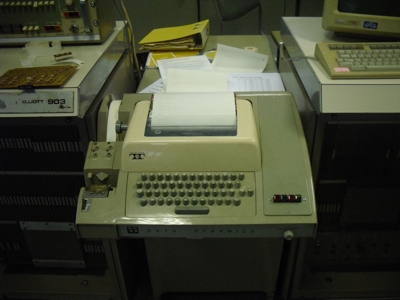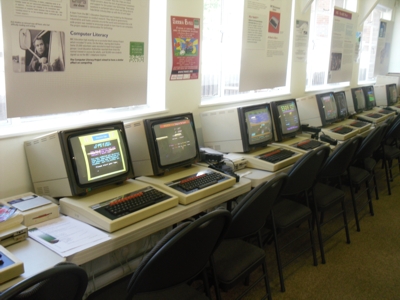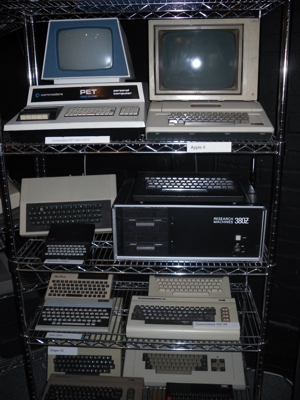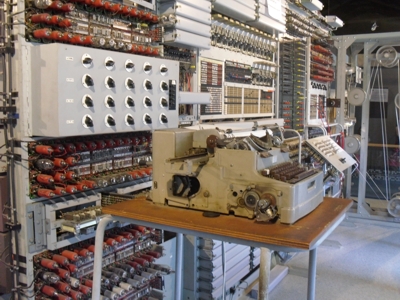They had a lot of interesting exhibits, although there's something alarming about seeing things in a museum that I remember having used in real life. Here's a teletype just like the ones we had when I was an undergraduate, for example:

Before those a few years younger than me get complacent, here's their BBC Model B teaching room:

Those are actual, working BBC Model B computers that they let actual, working schoolkids use. I can't imagine many museums let members of the public loose on their exhibits, but this one does (for some of them, at least). Note that the Beebs have their cases on, unlike most of those in schools, which typically had their cases removed so people could get at the insides.
Now who feels old, eh?
Here are some other early personal computers:

The ones I recognise are a Commodore PET, an Apple II, a Sinclair ZX81, a Research Machines 380Z, a Tangerine Oric 1, a Commodore VIC-20, a Dragon 32, a Commodore 64 and an Oric Atmos.
The gem in the collection (or at least the beast that they're most proud of) is the rebuilt Colossus Mark II system, which was used to crack the codes of the Lorenz cipher machine in the Second World War:

The Colossus was the world's first programmable computer, at least it was if by "programmable" you mean "you can change what it does by turning the knobs on the front to different settings".
My talk went better than I was expecting, and I even met some people I knew from MUD days (hi, Grendel!). All in all, it was a good visit from my perspective.
Except...
So, this is what the National Museum of Computing looks like from the outside:

As you can see, it's in a bunch of huts it rents from Bletchley Park (there's another one to the right). As you can also see, it's not exactly large. It may be a national museum, but it's staffed entirely by volunteers. It receives no money in grants, not even from the National Lottery. It only exists because of the enthusiasm of the people who give up their time to run it. It's short on space, not only for storage but for actual exhibits. If someone gave them an IBM 360 or a DECsystem-10, they would have absolutely nowhere to put it. While I was there, someone wanted to give them some 20-year-old PDAs, but they wanted to check first in case they already had any of them. The shop was about three orders of magnitude less impressive than the shop in Colchester Castle.
This is scandalous! This is our national collection of computing history, and it's held together by bits of string and the goodwill and efforts of volunteers. Why isn't it getting any government support? A hundred years from now, our descendants will be cursing us for not having invested in conserving these objects (and their software, which the museum also tries its best to preserve).
Of course, the people who control sources of museum funding won't be around in 100 years, but they are around now. Their priorities are those of today, not those of tomorrow. Thank goodness we have Turing as poster boy for the Bletchley Park code-breaking operation or that would be a housing estate by now, too.
Damn, but it's infuriating...